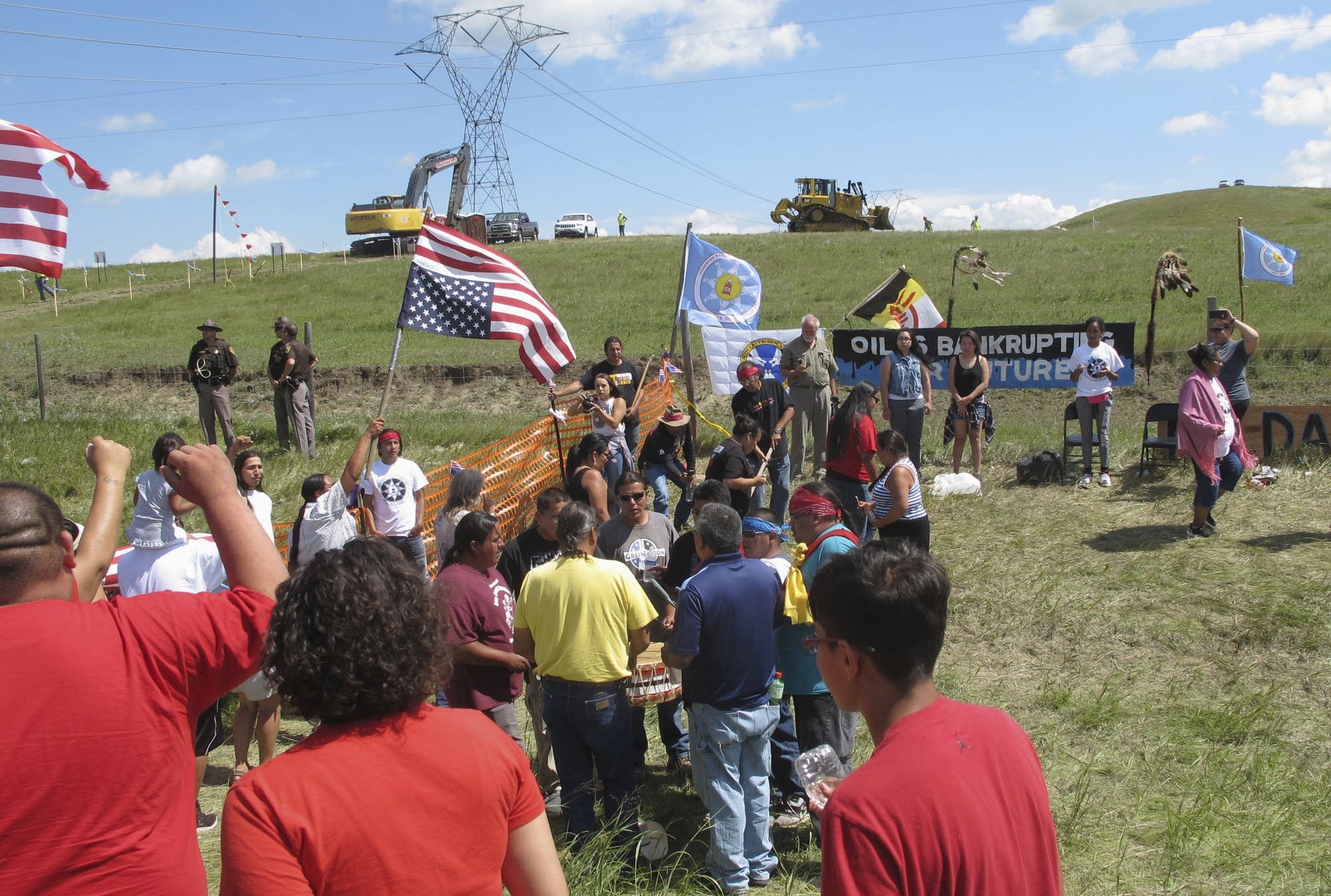The North Dakota Pipeline Revolt



The North Dakota Access Pipeline has recently caused controversy and broken records. In fact, the largest gathering of indigenous nations have set up camp near Missouri rivers in North Dakota to protest this incident. This is because the North Dakota Pipeline runs within a half mile into the Standing Rock Sioux reservation and cross beneath the Missouri River. This has become a huge problem for Native Americans living near there, who say that it will destroy wildlife, river resources, drinking water and disturb sacred tribal sites. Reservations were made by the United States government to reserve lands for the Native Americans, who lived on United States soil before it was even the United States.
Now this Pipeline project has a 3.8 billion budget, and it carries crude oil underground. This is an intense project for the United States, and yet there are problems with it. Inevitable oils leaks have sprung up, already damaging the environment near Native American reservations.
The Dakota Pipeline is the site of many revolts today, over the land taken from the Native Americans and stolen by American immigrants. It signifies the age-long conflict that has not been resolved yet it has built the basis of our country. Since the beginning of the United State’s institution in the 1700s, Americans have basically settled the land although people were already living there. We’ve established a solid American government, voting system, and relationship with foreign nations. Yet we haven’t followed the preamble mantra of “ensuring domestic tranquility” within our nation, for the Native Americans we have wronged still lay uncompensated. It’s not that the Native Americans aren’t troubled or don’t want to fight about their homeland, it’s that they can’t. Ever since the Battle of Fallen Timbers and even times during the Revolutionary War, the United States has proved that force and strength makes the final word. The Native Americans could not defend themselves militarily and therefore lost many of their homes.
In this opinion article we’ll be going over the viewpoints of both sides of the conflict. A sheriff in Cass County, North Dakota say that the intense North Dakota pipeline protests has haunted his dreams. In an interview, Paul Laney said that ““It was like 140 years of perceived Native American oppression came together there” and rightfully so. Since the revolts have such a concentrated number of people, they has become quite dangerous. Three additional protesters have already been arrested on January 16th. Laney added that it was the most intense experience of his career as a policeman and described the protest as “tense” and “scary.”
These Native Americans are already suffering from continual U.S. expansion, the taking of their homeland, and yet they have their limited reservations already tainted by oil pipelines. It would make sense for them to protest about this topic that they are so passionate about, and the protests have remained relatively peaceful. Oil spills are damaging water, meaning that the Native Americans have limited access to drinkable water and even food from rivers (as wildlife is dying out from toxic injestion). However, there is no turning back with the building of this pipeline – the damage has been done and money has been spent on the project.
So is there really a solution? How do protestors want the government or police officers to respond? Perhaps additional maintenance and regulations should be kept in place in the case of oil leaks or spills. As American immigrants, each United States citizen has the duty to pay respect to the ones who came before us.
To read more, visit: http://www.nbcnews.com/storyline/dakota-pipeline-protests
Cass County Sheriff Report: http://bismarcktribune.com/news/state-and-regional/cass-county-sheriff-says-intense-north-dakota-pipeline-protests-haunted/article_d155526e-ba6f-5870-9702-f4c19bee02ee.html
Three Arrested near the pipeline: http://www.reuters.com/article/us-north-dakota-pipeline-idUSKBN1510JT
https://daplpipelinefacts.com/

Vivian is a 8th grader this year attending Mr. Weyermuller's 8A class. She has two cats, both of which are featured on Falcon's Flyer (Honey and Onion...








Jennifer Ramirez • Feb 1, 2017 at 10:48 am
Nice job, Vivian!